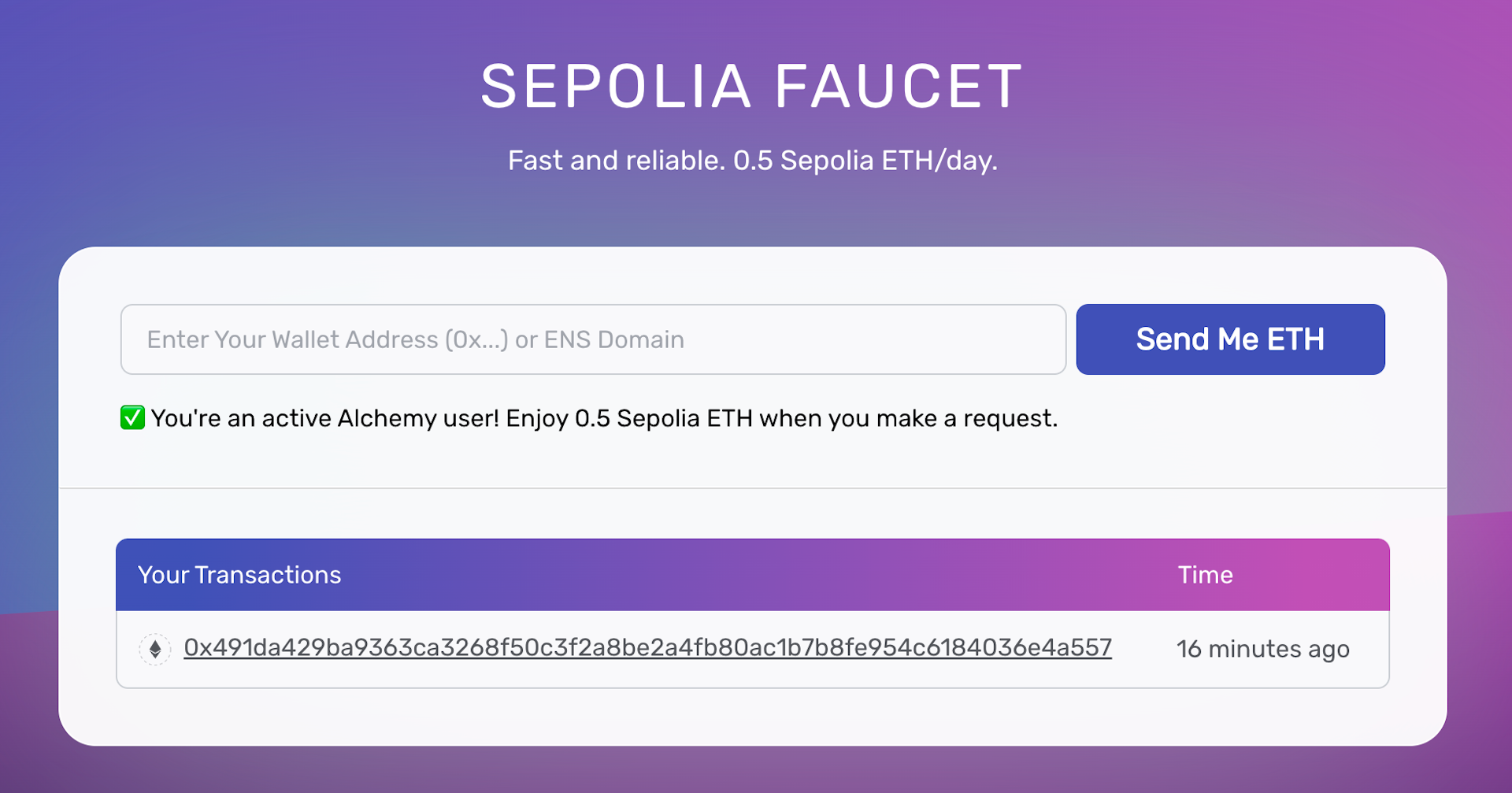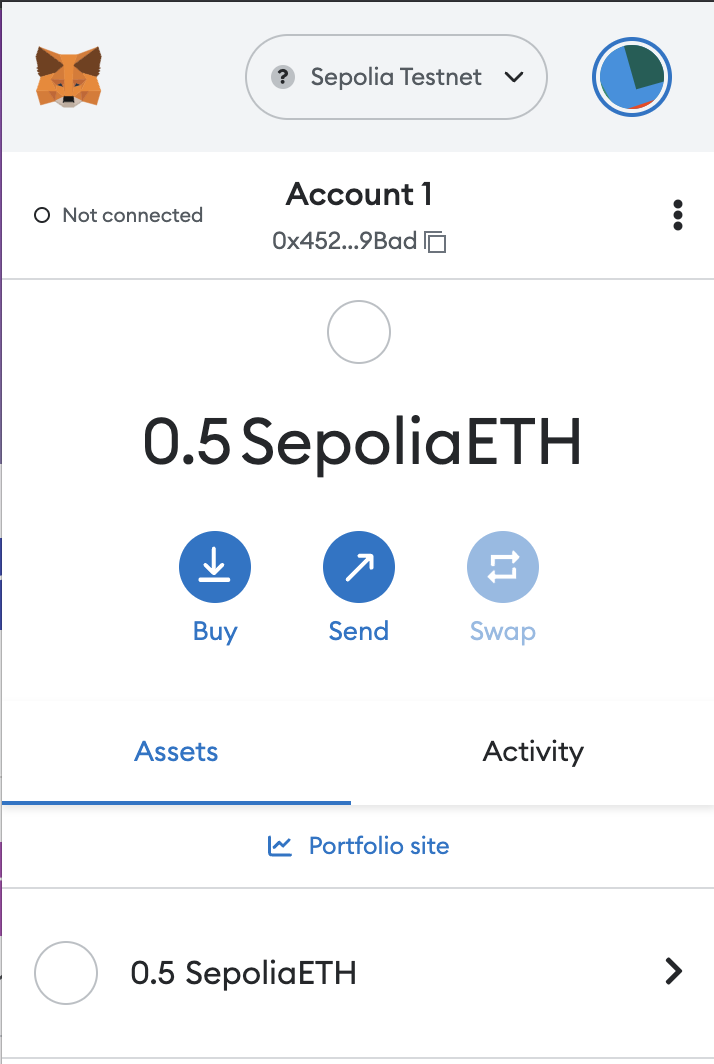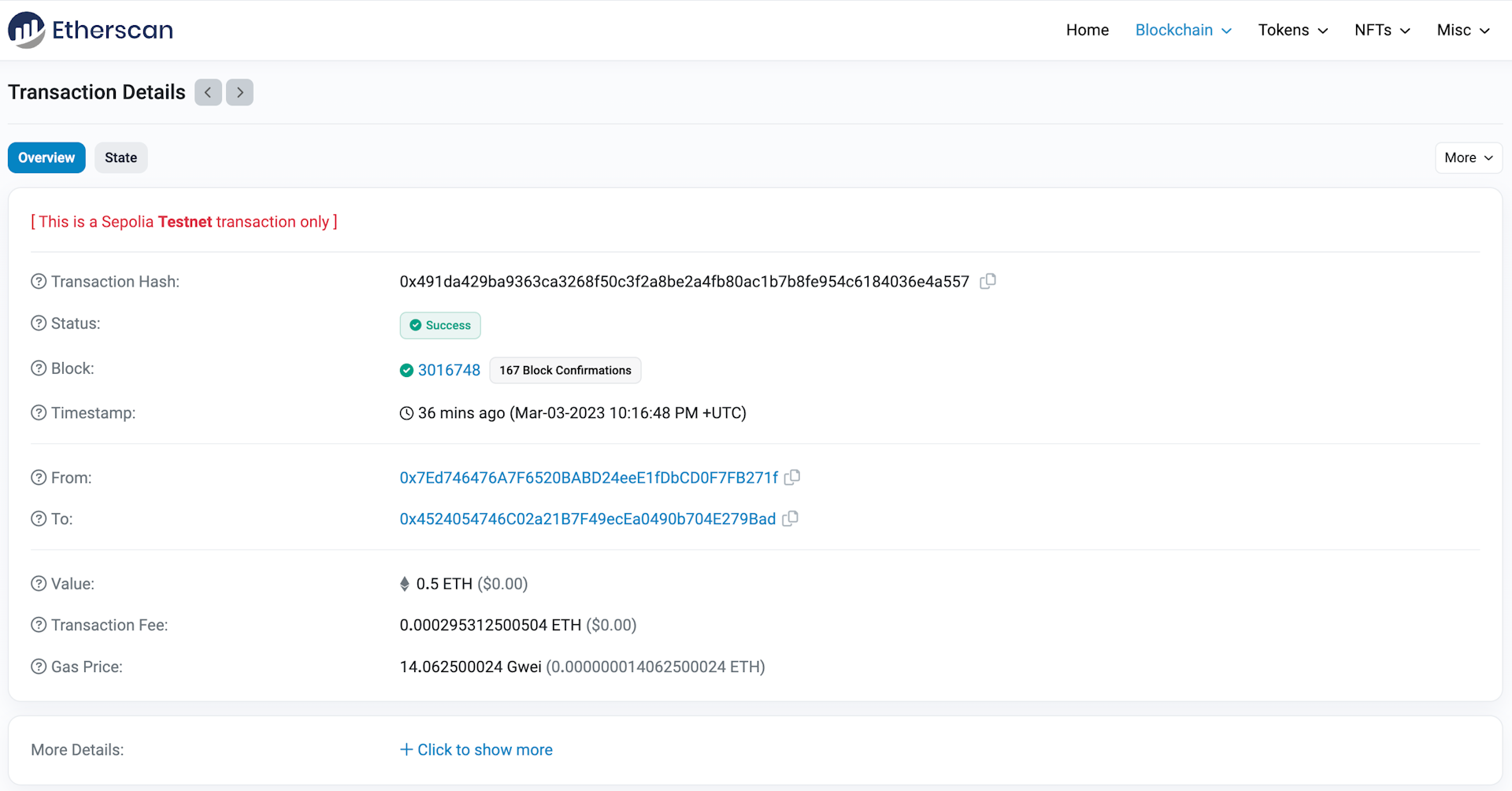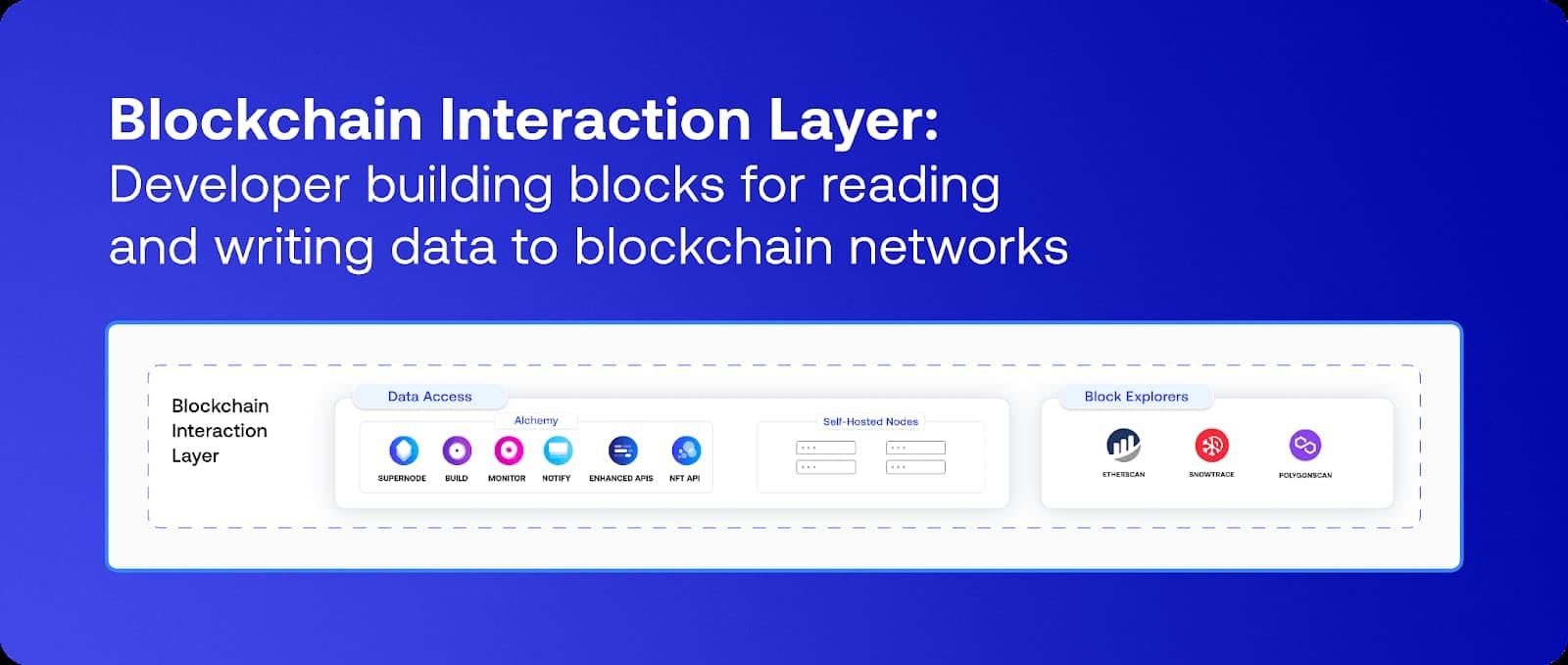
A Complete Guide to Ethereum's Rinkeby Testnet
Written by Alchemy
The Rinkeby Testnet is Deprecated
The Rinkeby testnet was deprecated by the Ethereum Foundation on October 5th, 2022. On October 5th, 2022, Alchemy's Rinkeby faucet was also deprecated. The Rinkeby testnet will be read-only for the foreseeable future and will be sunset in Summer 2023. Therefore, we recommend using Sepolia testnet to test your dApps, as Alchemy has full Sepolia support and a free Sepolia faucet.
What is the Rinkeby testnet?
The Rinkeby testnet was an Ethereum testnet used by developers to test decentralized applications before deploying them to the Ethereum mainnet. The network was a fork of the Ethereum mainnet that was run by pre-authorized nodes, preventing spam attacks and increasing performance.
Developers used Rinkeby Faucet to get free testnet ETH to test their smart contracts without the risk of losing tangible financial assets. Because it was a testnet, the currency was worthless. Users couldn't mine ETH within the Rinkeby testnet; they only requested it. Authorized nodes were the only ones that created new blocks, meaning no other nodes were awarded mining rewards.
The Rinkeby testnet supported the following node clients: Geth, Besu, Nethermind, and OpenEthereum.
This article will explain the Rinkeby testnet, its main uses, the Proof-of-Authority (PoA) consensus mechanism, and why it was deprecated.
When did Rinkeby launch?
The Ethereum team launched the Rinkeby testnet in 2017 using a modified proof of authority consensus model and was deprecated in favor of the Goerli testnet, another popular testnet that used the proof of authority consensus mechanism.
Rinkeby used proof of authority (PoA), a modified form of Proof of Stake (PoS). Instead of staking with something that has monetary value, a validator’s identity performs the staking to provide high performance while also giving fault tolerance.
How big was the Rinkeby testnet?
There were about 11,000,000 blocks on the network, and as of 2021, Rinkeby had about 50 million transactions. While in use, the Rinkeby testnet had 46 active nodes, and the block time for the Rinkeby testnet was about 15 seconds. The max limit a block could be filled up with transactions was about 41,000.
The Block gas limit for the Rinkeby testnet was about 30 million gas. The gas limit refers to the max price a cryptocurrency pays when sending a transaction or performing a smart contract function in the Ethereum blockchain.
Fees are calculated in gas units, and the gas limit defines the maximum value that the transaction or function can "charge" or take from the user. With the gas price at about 1,000 gwei and 0.1 h/s average network hash rate, it provided 100% uptime with 30-80 ms page latency.
Why did developers use Rinkeby over other testnets?
Developers chose Rinkeby over other testnets due to its faster block time. Ropsten had a block time of about 30 seconds, but Rinkeby cut that time in half.
The chain data size for Rinkeby was only about 6GB, which meant running an Ethereum node for Rinkeby wouldn’t require much data size compared to other testnets.
Overall, Rinkeby was known to be more reliable and faster than other testnets.
What were some disadvantages of using Rinkeby?
One of the disadvantages of using Rinkeby was that its proof of authority blockchain consensus model didn't fully simulate the production environment. This was different from the Ropsten testnet, where miners on the network had a financial incentive to maintain the testnet itself. The Ropsten testnet used a PoW consensus mechanism, which made it identical to the Ethereum PoW consensus mechanism.
Unlike the Kovan testnet, Rinkeby's testnet supported Geth software, not Parity.
How did developers use the Rinkeby testnet?
The primary use case for using the Rinkeby testnet was for developers to test their applications in a controlled testing environment that functioned like Mainnet Ethereum without taking the financial risk of executing smart contracts, iterating application features, and performing functionality.
Rinkeby was famously used by well-known companies such as OpenSea, Manifold Studios, and Rarible, which deployed their NFT marketplaces on Rinkeby before deploying on the mainnet.
Developers also used the testnet as an educational tool. Often, developers make several mistakes along their journey, and using a testnet enables them to understand better how to use the mainnet in the future.
Finally, developers used Rinkeby to test upgrades to the underlying platforms. This is essential to create better developer tools for the Web3 ecosystem and to create more libraries, better documentation, and essential feedback overall.
All these use cases relate to creating a safe space for developers to thrive. Without testnets like Rinkeby, developers would have to bear the consequences of potentially losing real-world assets, and they would have to be more careful interacting with their smart contracts.
How to Get Testnet ETH
Since the deprecation of the Rinkeby testnet, developers and Ethereum enthusiasts have transitioned to using the Sepolia testnet as an alternative testnet for testing Ethereum protocol upgrades and smart contracts. Here's a step-by-step guide on obtaining Sepolia ETH from a Sepolia testnet faucet that allows anyone to send a small amount of fake ETH to their wallet.
Head to Alchemy's free Sepolia Faucet
Sign in to your Alchemy account
Enter your wallet address or ENS name
Click "Send Me ETH"
Sepolia faucet interface for getting free SepoliaETH

A popup will display ‘Transaction sent’ with the amount of Sepolia ETH deposited to your wallet.
Next, you can check your Ethereum wallet to confirm you received the SepoliaETH.

With your Sepolia ETH, you can now run smart contracts on the Sepolia testnet.
To view the date and time, transaction fee, gas burnt, and other transaction details, you can look up your transaction hash on the Sepolia Etherscan.

What are the best Rinkeby testnet tools?
While the Rinkeby testnet was in use, it worked best with other blockchain developer tools to ensure developers had a great experience creating decentralized apps using a modern web3 tech stack. Web3 developers should consider the depth and breadth of available developer tooling, such as:
Popular Web3 Libraries
Two of the most used Web3 native libraries include ethers.js and web3.js. These libraries natively support remote procedure calls (RPC) to blockchain nodes hosted on the blockchain interaction layer. This enables seamless integration into a developer’s Web3 tech stack and reading and writing data to the blockchain.
Alchemy has another Web3 library. The alchemy-web3.js library is a drop-in replacement for web3.js and is built and configured to work seamlessly with Alchemy and provide multiple advantages, such as automatic retries and robust WebSocket support.
Popular Web3 Development Environments
Fortunately, EVM-compatible chains benefit from years of Ethereum development and have many battle-hardened options for development environments.
Hardhat, Truffle, and Brownie are all great options for development environments in Web3. These developer environments allow developers to compile, test, deploy, and debug Ethereum software.
In addition, they come with more tooling and easily customizable local blockchain development environments.
When it comes to decentralized storage, IPFS, Filebase, and Arweave serve as great options. Decentralized storage fills the gap for expensive and inefficient frontend content like images, videos, and GIFs.

Alchemy Tools
Development platforms like Alchemy provide an extensive suite of tools for testing and fixing bugs: Supernode, Build, Monitor, and Notify make this process much more convenient.
Now that the Rinkeby testnet is deprecated, developers can use Alchemy’s Sepolia development platform and dashboard to easily configure their needs in building Web3 decentralized applications.
Alchemy’s JSON Composer also helps developers create, fix, and share Ethereum requests, making the engineering process much faster.
Start Building Today
As web3 grows from its current state to maturity, there will surely be paradigm shifts, new web3 infrastructure tools, and plenty to learn. Using testnets is essential to developing web3 dApps before deploying them to the Ethereum mainnet. With the Rinkeby testnet deprecated, developers can build while having the security, speed, and scalability using tools on the Sepolia test network.
Join a growing movement of developers—both Web3 natives and fellow travelers from Web2— and together, we can build the future!

Related overviews
Building on Base? Get free Sepolia ETH and start testing your app!
Learn How to Migrate to the New Ethereum Testnet Sepolia From Goerli
Migrating dApps and Bridging Goerli ETH to Optimism

Build blockchain magic
Alchemy combines the most powerful web3 developer products and tools with resources, community and legendary support.